
Study techniques are powerful tools to enhance your learning, productivity, and focus. The best part? They make studying more enjoyable!
Research shows that students who apply study techniques not only learn more effectively but also achieve higher grades compared to those who don’t use any strategies.
(Remember, studying hard alone isn’t enough—it’s about studying smart with the right techniques and direction.)
Fortunately, scientists have developed various study methods to help improve learning. Whether you struggle to retain information or find it hard to focus while reading, there’s a study technique that can help.
In this article, I’ll break down 17 scientifically proven study techniques that you can try to boost your study sessions.
So, without further ado, let’s dive in!
17 Scientifically Proven Study Techniques:
1. Reading Comprehension Technique:

This study technique is one of the most effective ways to thoroughly understand a chapter or topic. Many students repeatedly read their textbooks without truly absorbing the material.
Reading comprehension techniques help you read strategically, allowing you to extract and retain the most important information.
There are several proven methods, including SQ3R, PQ4R, PQRST, and THIEVES, designed to enhance reading comprehension. However, in this discussion, we’ll focus specifically on SQ3R—one of the most effective techniques for active reading.
SQ3R is a five-step method that consists of Survey, Question, Read, Recite, and Review. Let’s break down each step in detail.
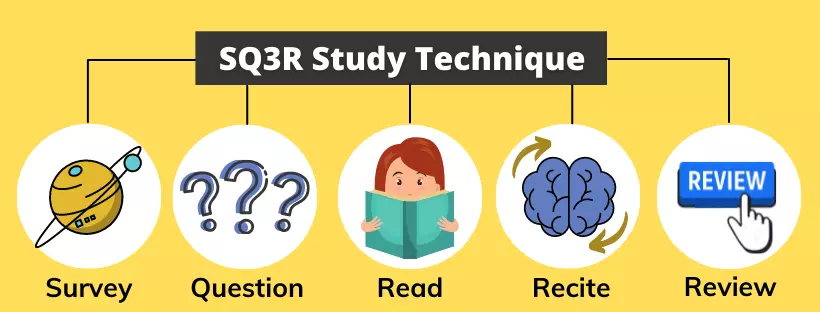
- Survey: Instead of just starting reading, first focus on the Title of the chapter, Introduction and summary sections, Headings and Subheadings, Graphics (like charts, maps, diagrams, and others), and Bold, Italic, and highlighted sentences.
- Question: After taking the survey now circulate questions around the chapter. Turn the headings for each section into as many questions as you think will be answered in that section.
- Read: After circulating the questions start reading the chapter section by section with your questions in mind look for answers to questions that you created in the second step.
- Recite: After reading one section stop and try to recall the answer that you find while reading that section. If you can’t recall then again go back to that section and find your answer again.
- Review: Once you’ve finished the chapter, now review the chapter to understand it more deeply. Quiz yourself on the questions you created and re-read any portions if you need to.
You don’t need to confuse yourself with all reading strategies. Just go with SQ3R or the strategy you are familiar with.
Read also: 18 Useful Skills to Learn (+How to Learn Them)
2. Spaced Practice:

Learning new information every day can make it difficult to retain what you’ve previously studied. To improve memory and make your revision more effective, try incorporating Spaced Practice into your study routine.
Spaced Practice involves reviewing and revisiting study material at strategic intervals over time.
Research shows that if you review a lecture within 24 hours, you can retain up to 80% of the information. Even better, by following a structured review schedule and revisiting the material five times, you can maximize retention to 100%.
- Day 1: Learn the material in class
- Day 2: Revisit and review
- Day 3: Revisit and review
- After one week: Revisit and review
- After two weeks: Revisit and review
Isn’t it a fantastic method for retaining what you’ve studied?
The spaced practice technique operates on the concept of the Forgetting Curve, which illustrates the amount of knowledge lost over time when the brain doesn’t actively make an effort to recall it.
Rather than cramming before exams, adopt spaced practice—an empirically validated study technique. This approach will assist you in storing information in your long-term memory, ensuring success in tests and exams.
3. Leitner System:
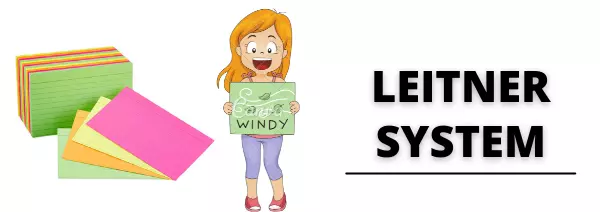
The Leitner system is a memorization study technique that leverages flashcards and spaced repetition. For those unfamiliar with flashcards, they are small cards—whether physical or electronic—with two sides.
On one side, you write a question, and on the other, the corresponding answer.
Here’s how the Leitner system operates:
- Box Setup: Create three boxes—Box-1, Box-2, and Box-3. Consider coloring them for easy identification. Box-1 is for daily review, Box-2 is for reviewing every other day, and Box-3 is reserved for weekly reviews.
- Flashcard Creation: Identify questions or concepts that you tend to forget or find challenging to remember. Craft flashcards for these items.
- Initial Placement: Place all newly created flashcards into Box 1.
By adopting this approach, you establish a systematic review schedule. Each day, review the contents of Box 1. Every other day, review Box 2, and every week revisit the flashcards in Box 3. This structured repetition helps reinforce your memory and enhances the effectiveness of your study sessions
(Watch this video for a better understanding of flashcard systems.)
Every flashcard will begin in Box 1. If you answer a flashcard correctly, move it to Box 2. In the event of an incorrect answer, return the card to Box 1. Repeat this process for each flashcard in Box 1.
Upon completing this round, you may observe that certain concepts persist in Box 1. This indicates that these particular concepts are more challenging for you and necessitate more frequent study.
You have the option to utilize both physical and electronic flashcards, but it is recommended to prioritize the use of physical flashcards.
4. Retrieval Practice:

Retrieval practice stands out as an effective strategy that compels your mind to actively recall information. Research indicates that recalling an answer to a question enhances learning more significantly than simply searching for the answer in your textbook.
Engaging in the process of hard recall, where you actively bring information to mind, serves as a powerful catalyst for learning. This method scrutinizes precisely what you know and assesses how much information you can successfully recall.
Now, let’s delve into the reasons why retrieval practice proves to be highly effective…
The best methods to use retrieval practice are Quizzes, Clickers, Flashcards, Practice Tests, and others. You can also use retrieval practice after the class by writing down all the information that you learned in your previous class, this will pass the information into your long-term memory and you won’t forget easily what you learned in the class.
5. Zeigarnik effect:

The Zeigarnik effect allows students to optimize their study breaks. Named after its founder, Russian psychiatrist and psychologist Bluma Wulfovna Zeigarnik, this phenomenon reveals that leaving a task unfinished in the middle enhances long-term memory retention compared to completing it.
Now, let’s explore how the Zeigarnik effect proves beneficial for students…
According to this principle, students who interrupt their study sessions with unrelated activities, such as using the phone or enjoying snacks, are more likely to remember the material. This contrasts with students who power through study sessions without breaks. The interruption in the middle of the task keeps the mind engaged, leading to better retention. Even during breaks, students might discover new ways to solve problems.
Isn’t it one of the most effective study techniques available?
So, whether you’re a student who dislikes studying or someone grappling with challenging problems, incorporating breaks with the Zeigarnik effect will consistently prove advantageous.
6. Pomodoro Technique:

Pomodoro is an effective time management technique developed by Francesco Cirillo in the late 1980s. This study method allows students to break their study sessions into manageable chunks with short breaks in between. The technique involves using a timer to divide your work or study into intervals, typically 25 minutes in length, followed by short breaks of 5 minutes.
Each 25-minute study session is referred to as a Pomodoro, named after the Italian word for Tomato. Upon completing four Pomodoros and taking short breaks, the Pomodoro technique permits a longer break of 20 minutes. This approach is particularly beneficial for sustained and effective study over extended periods.
It’s crucial to refrain from using your phone or engaging in other tasks during your Pomodoros. The recommended practice is to avoid distractions and maintain focus. After a productive 25-minute study session, you can allocate 5 minutes to check your phone or attend to other matters.
If you are familiar with the Zeigarnik effect discussed previously, you understand how to make the most of your study breaks and enhance overall productivity.
7. The Learning Pyramid:

This isn’t a study technique; instead, it’s a valuable theory that every student and learner should be aware of.
Referred to as the 'cone of learning,' the Learning Pyramid was developed by the National Training Laboratory. It precisely illustrates how much information one retains through various mediums.
For instance, when a teacher employs a lecture-based instructional method, students typically retain only 5%-10% of the information, while the teacher retains 90%.
According to this theory, students tend to remember approximately 10% of the content they read from textbooks but retain nearly 90% of what they learn through teaching others. While the exact percentages may vary, the overall retention rate significantly differs based on the chosen learning medium.
Refer to the image below illustrating the learning pyramid theory and its corresponding retention rates.

Now you better know how you can retain more information. So, what you learn make sure you practice by writing and teaching someone or yourself.
You can also enhance your learning experience by taking online courses available on platforms like Coursera, Khan Academy, or others that align with your academic subjects.
8. Feynman Technique:

The Feynman Technique was developed by theoretical physicist Richard P. Feynman, who has also won the Nobel Prize. He is also known for his learning process that makes the process extremely simple and effective.
The Feynman Technique is not only effective for mastering a concept but also aids in long-term retention. According to this technique, you articulate the concept in simple terms and identify any gaps in your understanding.
The technique involves four steps:
- Pick a topic and understand it properly
- Explain the topic to someone in an easy way (from basic) so that the other person can easily understand what you want to teach
- Identify your knowledge gap where you can’t explain clearly
- Organize+ Simplify the concept (if you can’t return to the literature to understand it better)
Don’t you think it’s an interesting way to learn and understand a concept quickly?
9. Pre-testing before learning the new information:

A study conducted by The University of Chicago Learning Lab revealed that failing a test or taking a test before learning new information can enhance memory retention more effectively than spending an equivalent amount of time solely on studying.
According to this approach, when students take a pre-test before delving into a new topic, regardless of their performance, they not only gain a better understanding after studying but also experience improved retention of the studied material.
Pre-testing allows students to establish connections between pieces of information during subsequent study sessions.
To implement this technique, consider taking a pre-test before delving into any new concept. Regardless of the pre-test results, focus on the types of questions asked and commit them to memory.
This way, you can easily recall and relate the information during your subsequent study sessions. Don’t be discouraged by a poor pre-test performance; instead, use it as a valuable learning tool to enhance your overall understanding of the subject matter.
10. Mind-Mapping:
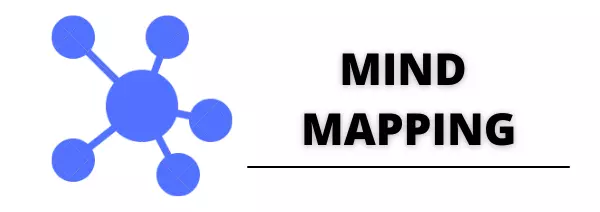
Visual learning is one of the most effective learning methods today. Numerous studies have shown that it not only makes studying easier but also enhances long-term retention.
Among various visual learning tools, mind maps stand out as one of the most powerful resources.
Mind maps combine words and images, forming strong associations that improve recall.
How Can Mind Maps Benefit You?
Using mind maps offers several advantages. Here are some key reasons to incorporate them into your learning process:
- Enhance Memory: Visual cues, words, and images help reinforce information.
- Identify Relationships: Mind maps allow you to connect different topics more effectively.
- Make Studying Engaging: They make learning more interesting and improve subject understanding.
- Encourage Deeper Learning: You can explore topics broadly and in-depth.
- Improve Organization: Mind maps help structure thoughts, making it easier to plan assignments.
If you need a mind map for any subject, you can find pre-made ones on Google. However, I recommend creating your own or integrating them into your note-taking process, as this boosts creativity.
Mind maps can be created in two formats:
- Online: Using various tools and applications.
- Offline: Drawing them in a physical notebook.
Try incorporating mind maps into your study routine and experience the difference!
11. Color-coding your notes:

Do you also use different colors while taking notes?
According to NCBI, color plays an integral role in our visual experiences. Colour helps us in memorizing certain information by increasing our attentional level. It’s able to relay information and can be very effective in learning and memory performance. That's why your professors/lecturer suggests you to different colors while note-taking.
Incorporating colors into your notes doesn’t mean using random shades or an excessive number of colors.
The key is not to focus on making your notes look aesthetically pleasing but to use colors and highlighters strategically. The goal is to make information easier to identify based on assigned colors.
How to Use Colors Effectively in Your Notes
- Warm colors like yellow, red, and orange have been shown to enhance attention.
- Use red for key points to make them stand out.
- Highlight important sentences with yellow for quick reference.
Remember, each color should serve a specific purpose—it’s not just about making your notes look visually appealing but about improving comprehension and retention.
12. Studying while playing music:

Is studying with music beneficial or detrimental?
Well, the idea of studying while listening to music might sound intriguing, but what if I told you there are numerous advantages to having background music while studying?
(Background music refers to any music played while the listener’s primary attention is focused on another task or activity.)
Many research and studies have shown that background music tends to improve performance over no music and white noise, but not always in the same manner and it doesn’t affect everyone in the same way. However, it’s certainly true that some types of music can boost concentration and memory as well as increase alertness.
Now, it doesn’t mean that putting on a playlist of your favorite songs will magically help you breeze through a mathematical problem set. Instead, opt for music that differs from your usual genre and possesses a repetitive pulse.
Consider classical music, instrumental pieces, or any genre without lyrics, ensuring that the music doesn’t evoke strong emotions.
This way, the background music can provide a subtle and conducive atmosphere for concentration without distracting you from your task.
13. Exercise before the study:
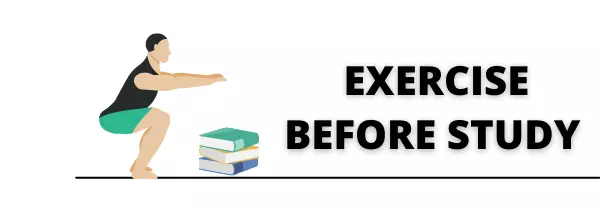
If you enjoy working out, you’re likely to appreciate this study technique because it involves incorporating exercise into your routine before studying.
Research indicates numerous benefits when students engage in physical activity prior to studying.
Studies conducted at Oregon Health & Science University reveal that a single exercise session can boost the expression of a gene promoting synaptic growth in the hippocampus. Additionally, physical exercise triggers the release of proteins in the brain that contribute to improved memory and enhanced cognitive performance.
(Note: The hippocampus is a complex brain structure located deep within the temporal lobe, playing a crucial role in learning and memory.)
Here are some significant advantages of incorporating exercise before studying:
- Improve your memory
- Give you better concentration while studying
- Improve your mood and motivation to study
- Increase energy levels in your body
You don’t need to go to GYM before the studying, just do 20 minutes of physical exercise at your home every day before studying and then see the result.
14. Dual Coding Theory:

Dual Coding Theory, a powerful study technique, suggests that combining visual and verbal information enhances learning. By integrating words with relevant images or visual representations, learners create a dual mental representation of the material.
This dual coding facilitates a richer and more interconnected understanding, as the brain processes and stores information both linguistically and visually.
When studying, incorporating diagrams, charts, or mind maps alongside textual information taps into this dual coding mechanism, making the material more memorable and improving comprehension.
Essentially, the synergy of words and visuals not only aids in encoding information more effectively but also supports better recall and application of knowledge during exams or real-world scenarios.
15. Learning best when you rest:

We all recognize the importance of sleep for our well-being, but did you know that sleep, learning, and memory are interconnected?
According to Science Daily, research from the University of Notre Dame indicates that going to sleep shortly after acquiring new information is particularly advantageous for memory recall. The study confirms that sleeping immediately after learning something new enhances memory.
This suggests that reviewing information before bed can be highly beneficial for retention.
Instead of pulling all-nighters or scrolling through your phone before sleeping, try dedicating 30-60 minutes to studying. This could involve reviewing flashcards or revising your notes, helping to reinforce your memory and enhance your overall learning experience.
16. The 9-8-7 Rule:

This technique offers an effective way to balance your study commitments with sleep and other daily activities.
Simply put, it involves adopting a balanced approach to scheduling, with optimal time allocation for studying, sleep, and other tasks.
According to the 9-8-7 rule, students can allocate 9 hours to studies, 8 hours to sleep, and 7 hours to other activities. While these hours can be adjusted based on individual requirements, there are compelling reasons why this distribution is considered optimal for many students and working professionals.
Dedicating 9 hours to studying ensures focused and productive learning sessions. A recommended 8 hours of sleep plays a crucial role in cognitive function and memory retention, while the remaining 7 hours for meals, relaxation, and socializing help maintain a healthy work-life balance.
This structure emphasizes the importance of rest and recreation, preventing burnout and ultimately enhancing academic performance.
By following the 9-8-7 Rule, you can create a sustainable routine that prioritizes both academic success and personal well-being, fostering a balanced and effective approach to learning.
17. Surroundings for study:
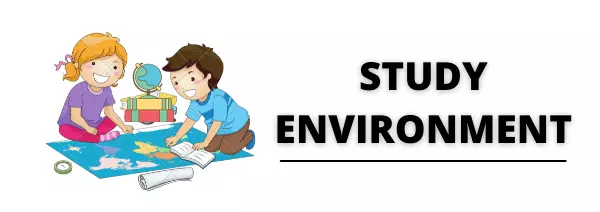
The location and surroundings significantly influence the effectiveness of your study and learning experience. Similar to other study techniques, a conducive study environment can enhance your study mood and improve focus.
Research affirms that various factors, such as seating, lighting, background noise, and more, can impact your learning ability.
It is crucial for your learning environment and surroundings not only to be free from distractions but also to provide support and motivation during your study sessions. Whether you choose to study in your room, a coffee shop, a park, or a library, ensure that the chosen space is comfortable for you and promotes optimal concentration.
Final Thoughts:
In this article, we have presented 17 scientifically proven study techniques to help you study smarter. Each technique guides you on the correct and most effective ways to approach your studies.
Rather than sticking to ineffective study habits, consider adopting these new methods to enhance your study performance.
We hope you find this list of the best study techniques enjoyable and practical.
Now, we would like to hear from you:
Which study techniques are you already using? And, do you plan to try all of these study techniques in your studies?
Feel free to share your thoughts in the comments below.

It was really great to understand how we can learn effectively..
Thanks, Rasmi. Let me know which study technique helps you most.
Thanks, I hope this technique help me to get rid this laziness in me.
I’m sure these techniques will work if you use them correctly 🙂
I used puppets when studying in primary and secondary school. We called wayang; one ask and the other answer like teacher and students. We used the character of wayang and music as background all with my own mouth. I think it is effective.
It is amazing how well a dog learns this technique
I really like this, thanks for sharing as my exams are coming I will try these techniques and let you know about it. I am pretty sure it will work.
I’m so glad you found it helpful! Best of luck with your exams—I’m confident these techniques will make a difference. Feel free to let me know how it goes! 😊
This post is a game-changer! I’m particularly excited to try the Pomodoro Technique and visual mapping. I’ve always struggled with time management while studying, so incorporating these methods might just boost my productivity. Can’t wait to see how they work for me in 2024! Thank you for the insightful tips!